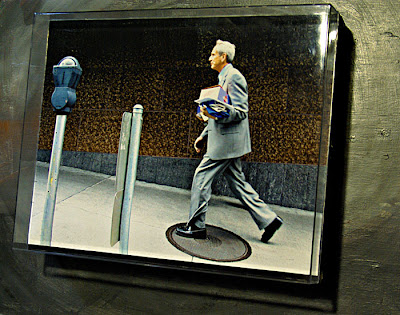When I first put my street photos on bONGOLIA, I loosely organized what I had at the time into groups of about ten images that seemed more or less to go together and called that a SET. Since that time whenever I get a new batch of nine or ten keepers I upload them and also call that a SET. But I think the term SET in photography should mean something more than "the latest wad of snaps I took".  A SET should be a carefully constructed group of images organized around an implicit or explicit principle or theme. And the order of display should be just as considered as the selection of images.
A SET should be a carefully constructed group of images organized around an implicit or explicit principle or theme. And the order of display should be just as considered as the selection of images.
For the street photographer that shoots as I do, with no subject nor agenda and no plan other than to take what the street has to offer - for that type of street shooter, creating a SET (in the proper sense of the term) becomes something of a venture fraught with agonizing reappraisals but rewarded with an occasional flash of insight.
I will have more to say about that process but for now I want to present the LINK to:



 The plastic bottle neck attaches at the nodal point using a cable tie and the rotates around the dowel. The concept I think is reasonable sound, the execution could use some refinements. That's it for now.
The plastic bottle neck attaches at the nodal point using a cable tie and the rotates around the dowel. The concept I think is reasonable sound, the execution could use some refinements. That's it for now.
















